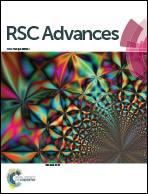Disinfection of water by pulsed power technique: a mechanistic perspective
Abstract
The mechanism of disinfection by pulsed plasma technology was investigated in detail, with Escherichia coli as the model bacteria. Studies were carried out to investigate the behavior of bacterial surface potential as a function of applied energy, based on molecular level analysis of DNA and proteins. The cell survival and morphological changes during plasma treatment were correlated with membrane damage using SEM analysis, along with DNA degradation and protein leakage. In addition, cell size (Z-average) and poly-dispersive index (PI) of E. coli cells were measured to understand the colloidal behavior of disinfected bacterial cells in plasma reactors. Significant membrane deformities and morphological changes were observed under SEM analysis, and lactate dehydrogenase (LDH) assay confirmed a drastic increase in membrane permeability upon plasma treatment. An energy dependent DNA fragmentation and protein leakage confirmed the killing of bacterial cells. The E. coli cell membrane zeta potential (−14.81 ± 2.08 mV) was neutralized to −1.08 ± 0.83 mV in 6 min of treatment time due to the propensity of H+ ions on bacterial membranes. The FTIR confirmed the changes occurring in the functional groups of bacterial cell membranes, which further emphasized the possible interaction with ROS/RNS and membrane damage.


 Please wait while we load your content...
Please wait while we load your content...